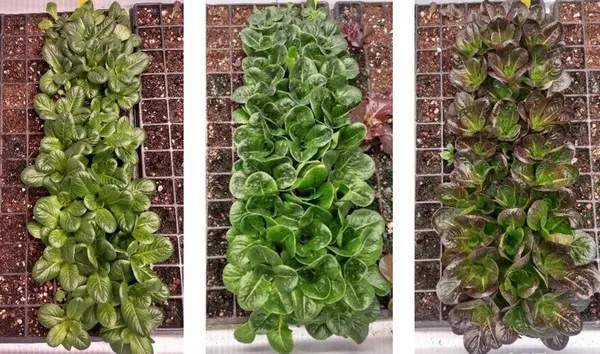Variety-specific nuances such as color, flavor, and morphology of hydroponic lettuces can be enhanced by dynamic LED lighting. For example, dynamic lighting holds significant potential for producing red-leafed lettuce, which typically grows slower than its green counterparts due partly to anthocyanin accumulation. The red color is due to this anthocyanin accumulation, with anthocyanin being an antioxidant and photoprotective pigment. Anthocyanin accumulation has been shown to reduce some crops' photosynthetic rate, making them grow more slowly than equivalent green varieties. Given baby leaf mixes need to be harvested at the same stage and size, the difference in growth rate poses a challenge for growers. With dynamic lighting, a grower can apply a particular light recipe over green-leafed lettuce and another over red-leafed lettuce to ensure consistent growth between varieties and facilitated harvesting.

One proven strategy is the application of a growth-centered recipe over red-leafed varieties during the production stage, followed by high-blue treatment during the finishing stages (i.e., 3 to 5 days before harvest). With this strategy, a grower can apply light conditions to maximize photosynthesis during the production stage, reach a marketable weight sooner, then promote anthocyanin accumulation during the finishing stage. Working in collaboration with Ohio grower, The Chef's Garden, Sollum Technologies has used stage-specific lighting with positive results.
Recent studies have also demonstrated the differences in spectral preferences of five lettuce cultivars, whose responses to different lighting strategies were recorded with respect to the number of leaves, relative chlorophyll content, fresh weight, and leaf shape index. Light green cultivars grew well under a balanced, white-light spectrum, whereas dark green and red cultivars performed well when the spectra were red- or blue-boosted. Furthermore, adjusting the spectrum improved leaf length and thickness, both important marketable traits. Working closely with The Chef's Garden, the team demonstrated that modifying the spectra had an essential impact on the lettuce body and highlighted the antagonism between leaf surface area and thickness. By adjusting the spectra, the grower could produce thicker or thinner leaves as needed and tailor the plants' leaf and stem lengths.
